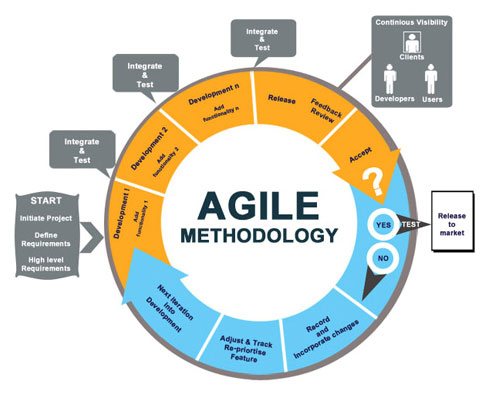The term agile management is applied to an iterative, incremental method of managing the design and build activities of engineering, information technology and other business areas that aim to provide new product or service development in a highly flexible and interactive manner, based on the principles expressed in the Manifesto for Agile. There are 12 agile principles outlined in The Agile Manifesto in addition to the 4 agile values. These 12 principles for agile software development help establish the tenets of the agile mindset. They are not a set of rules for practicing agile, but a handful of principles to help instill agile thinking. Feb 11, 2021 In February of 2001, 17 prominent thinkers from the world of software met at a ski resort in Utah. Together, they created the 4 values and twelve principles that became known as the Agile Manifesto. On this 20th anniversary Dr. Jeff Sutherland, a signatory of the Agile Manifesto talks about how it came to be. The original signatories to the Agile Manifesto were a group of 17 developers, scientists, programmers and authors who came together to find a solution to the perceived ills of the software development industry. Agile philosophy pre-dated the Agile Manifesto, and the group included a number of inventors and creators of earlier Agile Frameworks. A group of faculty members representing six colleges at a public university formed a learning community to study the Agile Way of Working-a method of workplace collaboration widely used in software development-and to determine whether the concepts.
When getting started with Agile, it's essential for teams to learn what agile stands for, its principles, and what its values are.
In this guide, we'll discuss all of these in detail.

Introduction To Agile Manifesto
How a group of engineers changed software development forever.
With market conditions and requirements changing rapidly, the software world has moved away from traditional waterfall based delivery models to a more iterative, customer centric delivery model. Today, the word “agile” is something that almost every software engineer has heard at some point or the other.
But it wasn’t always this way.

The agile movement was started at a ski resort in Snowbird, Utah. In this small town near Salt Lake City, 17 prominent engineers gathered together in February 2001 to create and sign the agile manifesto. This document would fundamentally change the way teams imagined, built, and deployed software products.
What Is Agile Manifesto?
The agile manifesto consists of four values and twelve guiding principles that shape agile delivery methodologies. Each methodology may follow these values and principles to different degrees but the overwhelming theme of all agile frameworks are:
- Increased customer collaboration
- Prioritizing the regular delivery of functional software.
The 4 Values of The Agile Manifesto
1. Individuals and Interactions Over Processes and Tools
The agile manifesto’s first value makes clear that agile teams must prioritize individuals and team interactions over recommended processes and tools. To put it simply, processes and tools should be implemented only when team members are comfortable using them - both individually and collectively.
2. Working Software Over Comprehensive Documentation
Before Agile went mainstream, there was a heavy focus on comprehensive documentation for every part of software built. This took up quite a bit of time and resources and heavily impacted delivery time. With agile, the focus was to be on delivering smaller, working components/prototypes frequently that required less on technical documentation, when compared to fully developed software.
3. Customer Collaboration Over Contract Negotiation
One of the most important differentiators of the agile manifesto is the emphasis on customer-centricity. The agile manifesto insisted that traditional software development was too one sided to truly be efficient. It sought to transform the end customer and actively involve them in the software development process. This idea was that increased customer collaboration would lead to regular course corrections and result in higher quality software delivery.
4. Responding to Change Over Following a Plan
To continue the theme of customer-centricity, the last value of the agile manifesto was to embrace change. In traditional methods of software development, change in requirements and specs was frowned upon as it resulted in wasted effort and missed deadlines. The agile manifesto argued that change was inevitable and an important part of building and shipping better software. The focus was now to be on incorporating regular customer feedback and making changes to requirements and specifications: on the go.
Https://agilemanifesto.org/
The 12 Principles of The Agile Manifesto
1. Customer satisfaction through early and continuous software delivery
The agile manifesto recommends that teams break down large projects into smaller, shippable components. The idea is to release these components faster and in regular intervals and keep the customers involved in the process. This continuous progress helps increase customer trust and satisfaction.
2. Accommodate changing requirements throughout the development process
In agile practices, changing requirements are seen as inevitable and development teams need to make room for changes in requirements and specifications.
3. Frequent delivery of working software
Frequent delivery is an important principle of the agile manifesto. The emphasis of delivering working software, as often as possible is to get the product out to be market-tested as soon and as often as possible.
4. Collaboration between the business stakeholders and developers throughout the project
The Agile manifesto sought to transform the software development process from a siloed process to a collaborative one. Customers are seen as an integral part of the development process rather than mere end users of the product.
5. Support, trust, and motivate the people involved
This principle is a reflection of the first value of the Agile manifesto. The idea that the people building software must help and support each other is central to ensuring that the best quality of software is delivered.
6. Enable face-to-face interactions
Communication between team members benefits greatly when face to face interactions happen whenever possible. Roadblocks get removed faster and people can share expertise to help solve problems faster.
7. Working software is the primary measure of progress
The agile manifesto measures progress through the constant release of market-testable software. The goal is to deliver working software as regularly as possible. All other metrics being monitored should help further this goal of shipping predictably and often.
8. Agile processes to support a consistent development pace
Teams should work on establishing processes that help them maintain velocity and ship software at a predictable pace. Once these processes are established, they can be tweaked for improvement.
9. Attention to technical detail and design enhances agility
The final quality of software being shipped depends largely on the quality of the technical and design specifications. Efforts should be made to have a team in place to deliver high quality specifications to ease the burden on delivery teams.
10. Simplicity
Focus on delivering effective software that meets requirements. This principle was created to ensure that development teams don’t overcomplicate when it comes to making technical decisions and implement them.
11. Self-organizing teams encourage great architectures, requirements, and designs
The agile manifesto encourages organizations to create self managing teams that have the knowledge and cross-functional skills to take ownership and tackle roadblocks effectively.
12. Regular reflections on how to become more effective
Improving processes constantly is one of the principles encouraged by the agile manifesto. Most agile frameworks have meetings for performance reviews or retrospectives that reflect on team performance improvements that can be made.
Agile Manifesto Printable
If you're looking for a project management software that will allow you to implement these values and principles, we've put together a comparison of agile tools list. This should help you evaluate a tool for your team.
We follow these principles:Our highest priority is to satisfy the customer
through early and continuous delivery
of valuable software.
Welcome changing requirements, even late in
development. Agile processes harness change for
the customer's competitive advantage.
Deliver working software frequently, from a
couple of weeks to a couple of months, with a
preference to the shorter timescale.
Business people and developers must work
together daily throughout the project.
Build projects around motivated individuals.
Give them the environment and support they need,
and trust them to get the job done.
The most efficient and effective method of
conveying information to and within a development
team is face-to-face conversation.
Working software is the primary measure of progress.
Agile processes promote sustainable development.
The sponsors, developers, and users should be able
to maintain a constant pace indefinitely.
Agile Manifesto Principles
Continuous attention to technical excellence
and good design enhances agility.
Simplicity--the art of maximizing the amount
of work not done--is essential.
The best architectures, requirements, and designs
emerge from self-organizing teams.
At regular intervals, the team reflects on how
to become more effective, then tunes and adjusts
its behavior accordingly.

Return to Manifesto
